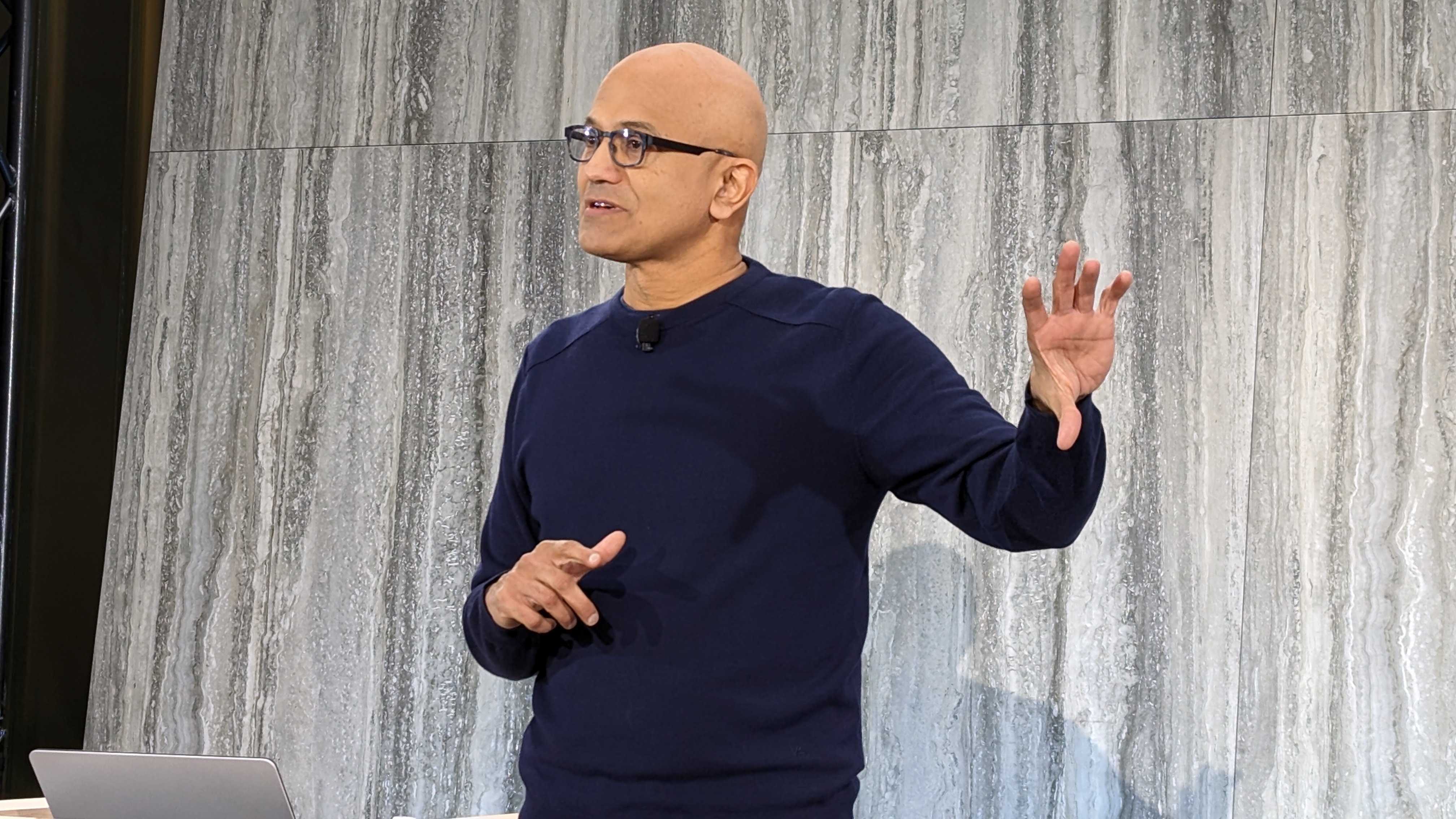Microsoft reports $56.5 billion in revenue for FY24 Q1, declines in Surface offset by increases in cloud, Office, and Xbox
Microsoft's revenue this quarter was up 13% year-over-year, mostly thanks to the cloud again.

What you need to know
- Microsoft has released its quarterly earnings report for the first quarter of Fiscal Year 2024, which ended on Sept. 30, 2023.
- The company once again saw increases in revenue with $56.5 billion over the quarter, a 13% increase over the same period last year.
- The growth was mostly powered by major increases across cloud and Azure products, with a 19% year-over-year increase for the entire Intelligent Cloud division.
- Office and Xbox both saw solid year-over-year increases, although Devices (read: Surface and consoles), saw a 22% decrease year-over-year, continuing the downward trend of recent quarters.
It's that time again! Microsoft has released its quarterly earnings report, detailing the successes and stumbles of the company's various divisions and investments. This time around, the report details Microsoft's business over Q1 of Fiscal Year 2024, a period which ended Sept. 30, 2023.
Matters are largely positive here, with Microsoft seeing an increase to overall revenue versus the last quarter, which Microsoft reported as being its strongest quarter ever. That means combined revenue of $56.5 billion, a 13% (12% in constant currency) year-over-year increase versus the same period last year. Other major numbers from the quarter include:
- Operating income was $26.9 billion and increased 25% (up 24% in constant currency)
- Net income was $22.3 billion and increased 27% (up 26% in constant currency)
- Diluted earnings per share was $2.99 and increased 27% (up 26% in constant currency)

Analyzing where Microsoft's success originated, the Productivity and Business Processes division saw $18.6 billion in revenue, a 13% (up 12% in constant currency) increase. Microsoft Office Commercial and Consumer products and cloud services saw 15% (14% in constant currency) and 3% (4% in constant currency) increases respectively, and Microsoft Dynamics products and cloud services enjoyed a massive 22% (21% in constant currency) increase in revenue year-over-year. LinkedIn also enjoyed an 8% increase year-over-year, hot on the heels of over 600 new layoffs in the division.
Moving on, Microsoft's biggest revenue increases continue to come from its major cloud investments. The Intelligent Cloud division, which includes Microsoft Azure, made $24.3 billion in revenue, a 19% increase year-over-year. Azure server products and cloud services were up 21%, while all other cloud services saw growth of 28% (26% in constant currency).
Finally, the consumer focused More Personal Computing division actually saw a year-over-year increase this quarter, although mild. The division made $13.7 billion in revenue, a mild 3% (2% in constant currency) increase. This revenue was largely driven by Xbox, actually, with a 13% (12% in constant currency) overall increase in revenue for Xbox content and services. Microsoft saw a modest 5% increase from Windows, thanks to a 4% increase in Windows OEM revenue and an 8% increase in Windows Commercial products and cloud services. Search and news advertising revenue also went up by 10% (9% in constant currency).
The only major decrease in revenue Microsoft saw this fiscal quarter was in Devices, which includes Surface and Xbox consoles. Revenue fell by 22% year-over-year, continuing the trend we've seen in recent quarters. We may see this decrease shrink next quarter with the release of new Surface devices.
Analysis: Xbox for consumers, cloud for everyone else
I doubt anyone is surprised to hear that Microsoft had yet another highly successful financial quarter. The company has been going from strength to strength lately, with cloud continuing to be the true cash cow for Microsoft, while heavy investments into AI products like Copilot set Microsoft up for future growth. Commercial and enterprise products remain the majority of Microsoft's overall revenue, but one division is persisting as a successful, consumer-facing brand — Xbox.
Get the Windows Central Newsletter
All the latest news, reviews, and guides for Windows and Xbox diehards.
Despite a 7% decrease year-over-year in console sales, Xbox overall enjoyed a 9% increase in revenue driven by its content and services. Xbox Game Pass, first-party game releases like Starfield, and success for third-party titles are driving Xbox forward. Now that Activision Blizzard is a member of the Xbox family, it'll be interesting to see if Xbox can maintain and even increase its momentum in following financial quarters.
Surface took a pretty major hit for Microsoft, but the premium PC brand has never been a huge source of income, instead operating as an influence for Microsoft's OEM partners. Still, the Devices category has seen year-over-year decreases of between 20-39% for the last four quarters. Microsoft just announced some new Surface devices which may help that deficit dwindle in the next quarter. Overall, cloud is king and Windows is queen (but Xbox is important, too).

Zachary Boddy (They / Them) is a Staff Writer for Windows Central, primarily focused on covering the latest news in tech and gaming, the best Xbox and PC games, and the most interesting Windows and Xbox hardware. They have been gaming and writing for most of their life starting with the original Xbox, and started out as a freelancer for Windows Central and its sister sites in 2019. Now a full-fledged Staff Writer, Zachary has expanded from only writing about all things Minecraft to covering practically everything on which Windows Central is an expert, especially when it comes to Microsoft. You can find Zachary on Twitter @BoddyZachary.
-
naddy69 "Microsoft's revenue this quarter was up 13% year-over-year, mostly thanks to the cloud again."Reply
Yes, of course cloud is growing.
"Still, the Devices category has seen year-over-year decreases of between 20-39% for the last four quarters."
Yes, of course Surface is shrinking. The entire PC market has been shrinking for the last 13 years, minus 2 years of growth during Covid when everyone suddenly needed a PC to work from home.
Windows PCs are not the future for Microsoft. With Panos Panay suddenly leaving, I suspect that the entire Surface brand will be gone sooner rather than later. That's why Panos is Gone Daddy Gone. -
DontBeEvil10 I loved Surfaces and Windows 10 till they made sense... than everything went downhill moving apps and OS controls to slow, heavy, pen and touch unfriendly web tech.Reply
